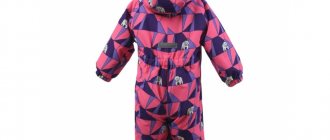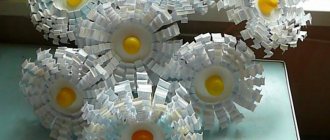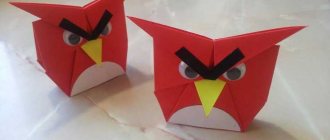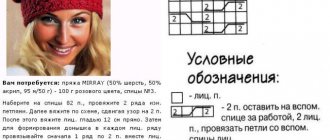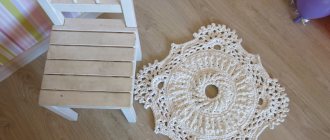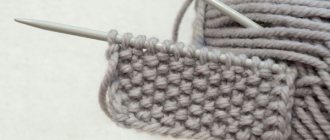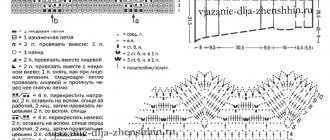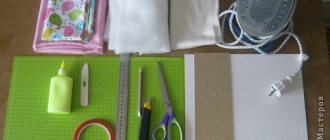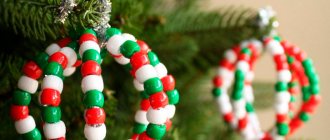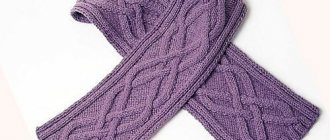Front and back: DIY headscarf turban
Classic way
Take a scarf folded into a wide strip in your hands, determine the middle by eye and place it on your head just above your forehead. Bring the free ends of the scarf back and scrape them together. Take each end in your hand and at the same time wrap them around your head so that they cross each other in front.
After that, bring the remaining ends back again and fix them under the wound part of the turban so that they are not visible, and, of course, so that the entire structure does not unwind as soon as you leave the house.
- 5 ways to wear a headscarf (some you didn't know about)
Eastern way
In the same way as in the previous method, determine the center and place the scarf so that the middle is approximately at the back of the head, tilting the head forward. Now you need to cross the free ends together in front, bring them back and wrap them crosswise in front again.
Tuck the ends under the wound part of the turban. Check if they are securely fixed (if in doubt, just pin them with bobby pins). Ready!
You can see more details about how to tie a turban on your head using both methods in the following video:
Turban is a great alternative to hats and caps
A turban is a head covering made from a long piece of fabric. Has many uses. If you have a shawl or scarf in your wardrobe, then you don’t need to spend money on a turban. It is very comfortable to wear; it is not for nothing that it is considered a practical headdress among many eastern peoples. In fashion, the turban is often associated with luxury.
Many famous women (Joan Collins, Sophia Loren, Barbra Streisand, Greta Garbo) loved to wear a turban, which gave them extraordinary charm and mystery. In addition, the stars probably knew that a scarf tied low on the forehead highlights the eyes, captivating with their sexuality.
In addition to red lipstick and voluminous jewelry, a turban adds a touch of charm and grace to a woman's appearance. Despite the apparent simplicity of this headdress, certain skills and abilities are required to tie it beautifully. There are a lot of attractive scarves and stoles in the market now in different colors and prints. It is better to start with cotton or linen scarves, since the situation with silk products is not easy.
There are many options for wearing a turban, we present you the main ones.
Turkish style
- First, tuck your hair under a thin cloth, tying it into a high bun.
- Place the stole over your head so that both ends hang loosely on your shoulders.
- Cross the ends of the scarf at the back, and then point them forward again, twist them back, and tie them.
African style
- Fold the thin scarf in half lengthwise.
- If the scarf is already the right size, place it over your head and pull it forward, fixing the middle part well.
- Tie both ends into a knot to secure it properly and begin twisting.
- As you curl the ends, simultaneously form a rosette at the crown.
- When you reach the end, tuck the loose ends under the twisted strand, and voila - you have a gorgeous turban on your head!
Two-color turban
A turban made from two scarves of different colors looks very interesting. First you need to tie them together into a knot, and then put the middle of the scarf behind your head. The ends of the fabric should be crossed at the forehead, then wrapped behind the head and crossed again. Hide the ends in the folds of the fabric.
Retro style
The next option can be made from a silk scarf. It should be folded to form a narrow strip and wrapped around the head. Next, tie a regular knot on the side, straightening the ends to form a fluffy bow.
Glamorous turban
Fold the large square stole diagonally to create a triangle. Drape it over your head and cross the ends at the back. Wrap them around your head and tie at the top, in the center. Place the longer end on top of the short one and fold it inward. Next, attach a vintage brooch to the center of the design to add glamor to the look.
Summer chic
This original turban will suit all girls without exception. Simply tie a bright scarf made of light fabric in two knots at the front and tuck the ends into the drapery on both sides. It will turn out fresh and beautiful. On sale you can find a ready-made headband made of brightly colored fabric, reminiscent of a turban.
Side knot
The beauty of side-tied turbans is that they always turn out differently. Let's take a closer look at how to tie a turban on your head with an emphasis on one side.
To begin, take a stole, roll it into a wide strip and place it on your head just above the forehead line. Tie a knot in the back so that one free edge is longer than the other. Then make an overlap on the side and make a loop from the short edge, threading the long one through it. The end of the short edge can be tucked under the fabric or released like a tail.
The rest of the long edge should be straightened over the head and hidden under the headdress in the place where the fabric reaches. Ready!
Another way to make a beautiful side knot starts in the same way: place the scarf on your head just above your forehead, and then tie a knot in the back so that one edge is longer than the other. However, now the overlap is made from the side of the long end - it wraps the short one, which hides under itself, due to which a fashionable knot is formed. We straighten the rest of the long “tail” again and wrap it around the head, and tuck the tip securely under the bottom.
If such instructions seem complicated to you, watch the video on how to properly tie a turban on a woman’s head:
LiveInternetLiveInternet
It’s not uncommon for anyone to see such an oriental headdress as a turban on the catwalks, but this accessory came to the masses quite recently. This summer, the turban could already be found in “ready-made form” in clothing and accessories stores. Well, for those who want to recreate a truly oriental accessory, let's look at how to tie a turban on your head. There are many ways to tie a turban on your head, and in this matter everything depends not only on your skill, but also on your imagination.
I will share with you the simplest methods of tying.
Method 1 1. Make a high bun on your head from your hair so that it holds its shape better, use a special elastic band. 2. Seal your hair with hairspray to prevent it from falling on your face. 3. It is advisable to use a long scarf for a turban, not a square one. Pass it behind the back of the head above the hair, the ends should remain in front, the ears are half closed. 4. Tie a knot or simply cross it on your forehead, and then wrap it around the bun in the same way several times until there are short ends left that need to be hidden under layers of fabric. 5. To make the turban more voluminous, the ends can be tied with a rope and secured under a scarf. 6. For this method of tying, both a plain scarf and a colored one are suitable.
Method 2 1. The simplest way to tie a turban is similar to the previous method, but the scarf is made not on top of the hair, but under it. 2. That is, pass the scarf under the back of the head under the hair, cross it over the forehead, pass it under the hair again and mask the ends under layers of fabric. 3. You can decorate such a turban with a brooch attached in the middle.
Method 3 1. And this method is also similar to the previous ones. To do this, place a scarf over your head and cross the ends behind your head. 2. Twist the ends of the scarf into a rope, and then wrap it around your head, overlapping them on top of each other. 3. Bring them back and, if length allows, forward again, and hide them under layers.
Method 4 1. A turban made from two scarves will look very interesting. It will turn out more voluminous and bright. 2. To do this, tie the ends together (you will get a very long piece of fabric), secure them at the back of your head over your hair and pull them forward. 3. Cross the ends together and throw them back through the middle of your head to cover the top of your head with the scarf. Cross the ends again. 4. Twist the ends with strands and also cross them over each other until they become very short and hide them under the fabric.
[/td]
Method 5 1. You can also create voluminous decorations on a turban using two scarves. 2. To do this, you need to fasten the first scarf on a high bun, as in method 1. 3. And braid the second scarf around your head in the same way as in method 3, but you should make bundles from the scarf at the very beginning. 4. Leave the ends of the second scarf somewhere around 20-30 cm and make a voluminous bow out of them.
A few more ways to tie a turban in the video and photo below. Watch and be inspired!
Source
And, of course, a video: master classes on tying a turban on your head to help you:
See also:
What to wear in winter instead of a hat or a turban to my rescue
How to tie a scarf/stole/shawl on your head in an original way
How to tie a scarf or scarf around your neck in different ways
Turban with plaits
In order to make a version with plaits, place the scarf on your head so that the middle is on your forehead, the edges remain approximately the same length. Then tie a simple knot at the back. Make sure that the fabric is not pulled too tightly, as the ends will have to be tucked under it.
After this, twist both edges of the scarf into fairly tight and dense strands. Take them in your hands and at the same time cross them together at a level just above your forehead. If the ends have unraveled a little, twist them into strands again and wrap the remaining edges around the entire circumference of your head. Tuck the remaining ends under the turban at the back. It’s good if you can use them to add a little volume to the resulting “hairstyle.” But if not, it's okay.
The harnesses can be pulled up a little higher or lowered, depending on what is comfortable for you.
How to tie a scarf.
If you don’t want to buy a ready-made headdress, but want to learn how to tie it yourself, then there are a lot of ways to tie a turban/turban. Let's look at a few of the most popular:
1. Turban rosette Option No. 1
- We take the ends of the scarf in the right and left hands, cover the head starting from the back of the head (as we tie a towel after a bath)
- Cross the ends across the forehead, once or twice
- We bring the ends down behind the head
- We tie a knot with the back of our head
- We tuck the remaining ends inward
2 Turban rosette Option No. 2
- Let's take a square one. Fold it into a triangle.
- We cover the head so that the corner of the triangle hangs over the forehead.
- Cross the ends of the scarf over the forehead
- We bring the remaining ends back, tie them and tuck them in
- We move the tip remaining on the forehead towards the crown and tuck it in.
3. Headband ala turban Option No. 1
In this way, a scarf can be tied both over and under the hair.
- take a scarf, preferably square. Fold it into a triangle. We begin to wrap the head under the back of the head, so that the top of the head is open and the ends are directed upward towards the forehead.
- tie a knot with your forehead. Let's straighten it out so it's nice and neat
- we tuck the ends inside
Option No. 2
- take a handkerchief. We wrap it around the head so that the top of the head is open and the ends are directed upward towards the forehead.
- Cross the ends over the forehead
- We bring the ends of the scarf back.
- We tie a knot at the back
- Tuck in the remaining ends
If you need a more elegant option, then, in my opinion, the following method is suitable. Everything is very simple.
- Take a scarf, preferably one with Lurex, and cover your head with it
- Cross the ends under the back of the head.
- we twist them with a tourniquet and lead them over the head.
- We hide the remaining ends.
And if you want to build a more voluminous structure, then here are a couple more interesting ways to tie a scarf:
In general, as you can see, there are many ways to wear a turban/turban. The main thing is a beautiful scarf, a little imagination, a little effort, and you will succeed.
What is the difference between a turban and a turban?
I already wrote an entry about the turban turban as a fashion trend at the beginning of my blog.
But I wanted to dig further. What is the difference between a turban and a turban? in different sources I come across different names, and different styles are called by different names.
I started looking for the etymology of words.
Some write that these are synonyms, others write that these are different things. Let's figure it out.
TURBAN
(Persian dulbend - headband). The headdress of the eastern peoples, which was replaced by a fez for all officials.
Dictionary of foreign words included in the Russian language. - Chudinov A.N., 1910.
in the East, a headdress in the form of a piece of white cloth wrapped around the head.
A complete dictionary of foreign words that have come into use in the Russian language. - Popov M., 1907.
So, t urban - the word “turban” came to the French turban from the Turkish tlbend, where it came from the Persian dulbend and means “fabric made of nettles.” A turban is a men's and women's headdress, which is a piece of fabric wrapped repeatedly around the head; common among a number of peoples of North Africa, the Arabian Peninsula, India and Asia. Its production usually requires 6-8 meters of fabric, but some types of turbans require up to 20 meters of fabric. This headdress is usually made from expensive fabrics (brocade, velvet, Indian muslin with gold prints, cashmere shawls), and decorated with brooches and pearls.
The most common turbans in India. Initially, it was created to keep the head cool and protected from the scorching sun. a large amount of cloth was soaked overnight in water and wrapped around the head. Remaining wet all day, it gave its wearer coolness.
In India, a turban shows the status of the owner. The shape of a turban can determine not only a person’s state, but also their village!
Indian Nihangi warriors have turbans that weigh up to 30 kg and are large due to their contents. They are traditionally rolled from dark blue fabric and decorated with silver Sikh insignia. Initially, the Nihangs put their weapons and things they might need on a hike in a turban. Nowadays, Nihang turbans have primarily decorative or ritual significance. There are a lot of interesting things you can write down if you drip further. But I’m not sure that everyone will be interested in this, because... far from fashion. More of a turban story.
Many warriors use a turban as a helmet, as protection from dust. It takes up to 2 hours to assemble
Many men in India these days wear a turban as part of their attire. Especially beautiful wedding turbans. Recently on the news, I saw a story about an Indian student who overstepped his principles and took off his turban (which cannot be removed in public according to his religion) to save the life of a child, stopping the bleeding with this large amount of tissue. This is an act worthy of respect!
Turban - it is often confused with a turban, but unlike it, the turban has an indirect lower edge. It is a piece of long cloth intricately wrapped around the head, but is typically smaller than a turban. The turban was originally worn only by men.
Turban
(Turk.)
1. A man's headdress made of a long narrow piece of fabric wrapped around the head; usually worn over a fez or skullcap. In the past, it was common among the professing Islamic peoples of North Africa, Western, South and Central Asia, etc. The turban in India and Pakistan is worn without additional headdress. Among different peoples, the turban differs in color, size, size, the way it is wrapped around the head and the quality of the fabric. These differences indicate not only the national, but also the social affiliation of the owner (for example, a green turban is worn by people who were considered the descendants of the prophet, or people who visited Mecca; a white turban is worn by all other Muslims).
2. Modern women's draped headdress. As a result of the drapery, the line of the lower edge of the turban in front is raised above the forehead, and on the sides it reaches over the ears.
3. A type of calico, characterized by a sparse structure, light (45-80 g/m2).
(Terminological dictionary of clothing. Orlenko L.V., 1996)
* * *
(Turk.) - among the peoples of the Muslim East, the traditional men's headdress is in the form of a piece of light fabric, repeatedly wrapped around the head, usually over a hat, fez or skullcap. The shape and color of the turban indicates the ethnic, social, and religious affiliation of the owner. There are about a thousand types of this headwear, depending on the length of the fabric, color, and method of winding. In the past, the turban was considered obligatory for a Muslim, as Muhammad himself wore it.
(Encyclopedia of fashion. Andreeva R., 1997)
Orientalists say that there were at least a thousand types and ways of wearing a turban
In the Middle Ages, the nobility had a favorite flower - the tulip; this can be seen in many buildings and treatises. It was carried between the folds of a turban for good luck.
On the Arabian Peninsula, the largest number of turban adherents is in Oman. And local imams and elderly people prefer kashada - a type of turban made of thin silk with golden patterns, which is tied over a small cap. In the modern world, a black or green turban is worn by the direct descendants of the Prophet Muhammad (PBUH).
There are seven ways of tying a turban in Iraq . The difference is in the number and shape of the folds, each of which has a name: shabliauvia, garuvia and others. By the color of the headdress, one can determine whether its owner belongs to a particular tribe, as well as part of the country. Based on the manner of tying a turban, visiting Muslims from India and Afghanistan. Pakistani and African people are different from native Iranians. For example, Indian Muslims hang the end of the turban over their chest.
The way of wearing a turban distinguishes visitors from India, Afghanistan, Iran and Africa. Noeshni also differ in color depending on the country and religion. But if you want, you can go deeper into the East, there is still a lot of interesting stuff there. There are also different types of turbans. And they still exist today.
Oriental headdresses, as I already wrote, came into fashion in waves. This wave has been going on since 2011. Stars appeared on carpets in turbans and turbans and decorated themselves intricately.
Here are the ways I found to tie a turban and turban.
Method 1
If you choose this (authentic) way of tying a turban, be prepared to feel and experience the Eastern culture. You need to take a fairly long strip of fabric (almost any fabric, from the finest silk to warm wool). Take one end in your teeth, while pulling the other diagonally. This is necessary so that you have the opportunity to freely use your hands. Wrap the fabric around your head gradually at an angle, covering open areas. You must continue the procedure until only a small tip remains of the entire piece of tissue. Carefully tuck this end into the turban. If you wish, you can secure it with a small accessory. The size of the resulting item depends on the size and thickness of the fabric. But it is worth remembering that a real oriental turban is always quite voluminous.
Method 2
This method is much simpler than the previous one. Take a scarf. It should be such that it can easily cover your head. Now cross one end over the other at the back of your head. Tie them securely at the front of your forehead. Then wrap one end into a loop and pass through a loose knot. And the other end, in turn, thread through the loop. Be careful not to pull too hard on the ends of the scarf. This will tighten the resulting structure. Tuck the ends under the fabric. The second stage will be a single repetition of the first steps of the described procedure, but instead of a knot, simply cross the ends of the scarf on the forehead. All that remains is to make a loop and pass the second end of the scarf through it, with the help of which a second loop is formed. Be sure to tighten the hinges quite tightly, otherwise the structure will fall apart. Hide all ends under the gathers of the fabric. Using the methods described above, you will get a correctly, and most importantly, beautifully tied turban.
How to tie a turban
Currently, few people would wear a turban consisting of a multi-meter piece of fabric.
But if you tie a long scarf in a special way so that it resembles this oriental headdress, it can turn out very beautiful. For a turban, take a long scarf made of thin fabric. Cover your head with it so that the hanging ends are the same size. Now cross them at the back of your head and then tie them on your forehead.
To make a pleat decoration on your forehead, take one end and fold it into a loop. Then tuck this loop inward under the knot and pull it out from above. Now pull the other end of the scarf through the loop. Tuck in the remaining fabric so that the ends do not droop. Tighten all loops and knots as tightly as possible.
To prevent your hands from getting numb, you can ask someone to help you deal with an exotic headdress. You can wear a turban with African braids or dreadlocks, it looks very impressive.
But I think it will be more clear schematically
On one of the sites I found the very method of making a turban. Maybe someone will want it. This is a master class
And a small selection of modern worn turbans and turbans
If you liked the article, subscribe to my newsletter!
Tying methods
The design of the turban involves repeatedly tying a long piece of fabric over the hair so that the forehead remains open. The optimal size of fabric for a modern turban is 130 x 40 cm. You should not use a short shawl, it will not make a beautiful headdress, and one that is too long will make a traditional Indian product. According to the rules, the shape of the canvas should be rectangular, but today other options are used.
You can read about how to tie a turban correctly online. To do this, you need to collect your hair in a bun at the back of your head or on the top of your head. This type of headdress implies the absence of bangs, but some models also look interesting with their hair down.
Tea party
Many women are interested in how to make a turban using the tea party technique. To do this you will need a scarf measuring 90 x 240 cm. Step by step instructions:
- Fold the fabric in half lengthwise.
- Place it over your head like a regular scarf.
- Twist the ends into a bundle from the back.
- Wrap around the head from the back of the head and back to it.
- Pass the end under the tourniquet, thereby securing it.
This is the first option. You can also tie a turban using the “tea party” technique in reverse. In this case, the tourniquet is formed not from the back, but from the front, above the forehead.
Charleston
In order to emphasize a sophisticated female profile, you can tie a turban using the Charleston technique. For this product you need a thin, elastic fabric measuring 90 x 180 cm. Step-by-step algorithm:
- Throw a cloth over your head.
- At the back of the head, pull the fabric tightly into a knot.
- Form a tight tourniquet.
- To tie a knot.
- Unravel the ends.
The ends of the scarf should be straightened to make them look fuller. This way of wearing a turban goes well with classic outerwear, such as a coat or even a fur coat.
Avanti
Fashionistas should definitely learn how to tie a turban on their head using the “avanti” technique. For this method, a scarf measuring 90 x 90 cm is suitable. Sequence of actions:
- Throw a scarf over your hair so that the third corner is exactly in the middle of your forehead.
- Pull the side ends forward.
- Cross the ends on the forehead.
- Pull the ends back and tie.
For “avanti” it is preferable to choose silk fabric. The technique is great for wearing the product in summer. Such a turban will protect from wind and sun, and can play a decorative role or be a decoration.
African
Few people know how to tie a turban in African style. This technique requires a high hairstyle. The hair should be gathered at the back of the head into a bun, you can even use a bun for additional volume. To create a turban you need a wide stole. Tying steps:
- The canvas needs to be unfolded, and then the third part should be tucked inside.
- The stole should be thrown over as if it were a towel, with your head down.
- Cross the ends together in front with your forehead.
- Throw the ends back and continue wrapping them around your head to create a tall turban.
- Hide the ends.
- Straighten the fabric to create interesting folds.
If you want to create a more voluminous turban, you need to fasten the fabric loosely at the back of your head, without tying the ends tightly. This headdress is in harmony with large, statement earrings. Bright eye makeup goes well with it. A prerequisite is well-groomed, clean skin, since the turban opens up the entire face and literally attracts attention to it.
You can also tie a beach version of a turban with a bow. To do this, you need to tie a scarf over an already made turban in the African way using the “tea party” technique. Only it is better not to thread the ends under the tourniquet, but to leave 20 cm free, then tie them in a large bow.
Tall stole turban
With bow
In Turkish
A turban tied in Turkish looks feminine. In order to repeat the technique, you need:
- Place the stole over your hair as if you were putting on a hood.
- Cross the ends at the back.
- Then pull them forward and overlap them twice.
- Pull the ends back to the back of the head and secure with a knot.
For this technique, it is better to choose Turkish scarves with bright, unusual patterns. Long earrings and outfits made of light, flowing fabrics would be appropriate.
From a scarf
Let's figure out how to tie a turban beautifully from a scarf. To do this, you should choose a product with a length of 3 m and a width of at least 70 cm. The manufacturing technique is easy, even a beginner can handle it:
- The scarf needs to be folded diagonally.
- Press the base of the fabric to the back of your head.
- Take the ends to the temples.
- Cross the ends over each other twice and pull them back.
- Cross the fabric again and form a knot.
- Tuck the remaining ends under the scarf.
This oriental headdress can be worn with loose hair and even bangs. It is perfect for an evening dress or a casual suit.
From two scarves
Turban headbands made from two scarves look interesting. The canvases must have a uniform texture, but different colors. You should proceed like this:
- The scarves are tied together with a small, strong knot.
- The cloth is applied to the hair, the ends are drawn towards the forehead.
- Scarves are wrapped around the head several times, from the top of the head and back.
- The ends are tied with a double knot.
Since this method involves two scarves, a lot of fabric is obtained. You can use it to tie a really large, voluminous turban. It is important that the rest of the outfit matches at least one of the colors of the turban, otherwise the look will be too bright, perhaps even vulgar.
We tie two scarves together
We place the cloth on the back of the head, wrap it twice around the head and tie it on the forehead
Tuck the ends under the scarf
Turban
A classic turban with side tips looks feminine and romantic. In order to make it yourself, you need:
- Place the fabric over your hair so that the ends are on the side.
- Tie the ends in a knot at the temple.
- Form the ends tightly into strands.
- Roll them into a voluminous flower in spirals.
- Secure with invisible ones.
Although this turban already comes with an embellishment (it ties with a flower on the side), it can be accessorized with a brooch. In a more classic version, the strands are not formed into an inflorescence, but are wrapped around the head and fixed.
Bandage
In summer, the question of how to tie a scarf so that it is not hot and beautiful is very relevant. To do this, you need to use a lightweight fabric that folds into a bandage. A common option is with overlap:
- Roll the scarf into a thin strip.
- Bring your hair so that the ends are above your forehead.
- Intertwined them with each other.
- Tie two knots.
- Wrap the remaining ends into flagella and hide them under the fabric on both sides.
You can make a bandage with tourniquets in the same way. To do this you need:
- Take a long piece of cloth.
- You need to tie the ends into a knot with your forehead twice.
- Wrap the ends in ropes.
- Pull it back to the back of the head.
- Secure with a knot and hide the rest.
In order to tie the fabric in the form of a bandage, you can use chiffon, satin, cotton, knitted fabrics. This method is suitable for creating Greek hairstyles. It also looks good with loose hair. In addition to its practical function, the bandage also plays a decorative role. It adds elegance and romance to any look.
Overlapping

